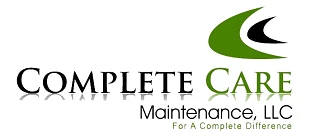Smart Scheduling: The Key to Effective Commercial Cleaning
In the dynamic realm of commercial cleaning, where maintaining a pristine workspace is paramount, scheduling takes center stage. It’s not just about cleaning; it’s about cleaning strategically to achieve maximum impact. The significance of smart scheduling in commercial cleaning should not be underestimated. Let’s explore how timing can elevate the effectiveness of cleaning efforts.
Understanding Peak and Non-Peak Hours:
One of the foundational principles of smart scheduling in commercial cleaning is understanding the ebb and flow of a business. Identifying peak and non-peak hours is crucial. Peak hours, typically when a business is bustling with employees and clients, require a delicate approach to avoid disruptions. Non-peak hours, on the other hand, provide an opportune window for more extensive cleaning activities.
Minimizing Disruptions to Daily Operations:
Smart scheduling in commercial cleaning is a delicate balancing act. Cleaning during peak hours must be discreet to minimize disruptions. Professional cleaning teams often adopt quiet, non-intrusive methods during business hours. This might involve using low-noise equipment and focusing on less obtrusive tasks.
Non-peak hours, such as evenings or weekends, present an opportunity for more intensive cleaning without the constraints of a bustling workplace. This ensures that high-visibility areas are consistently clean and welcoming to both employees and clients.
Strategic Cleaning of High-Traffic Areas:
Smart scheduling goes hand in hand with identifying high-traffic areas. These are spaces that witness a constant flow of people throughout the day. By strategically scheduling cleaning activities for these areas during non-peak hours, commercial cleaning teams can maintain a consistently clean environment without impeding the regular flow of business.
High-traffic areas often include entrances, reception areas, and communal spaces. These zones require more frequent attention to create a positive first impression on clients and provide a comfortable and inviting atmosphere for employees.
Adapting to Business Cycles:
Strategic scheduling involves adapting to the unique cycles of a business. For instance, retail businesses might experience heightened activity during weekends, while corporate offices typically follow a Monday-to-Friday schedule. Cleaning schedules must align with these cycles to ensure consistent cleanliness without disrupting core business activities.
Understanding the nuances of business cycles allows cleaning teams to allocate resources efficiently. It’s about being proactive rather than reactive—anticipating when a space will be at its busiest and ensuring it’s in optimal condition beforehand.
Using Technology for Efficient Scheduling:
In the contemporary landscape, technology plays a pivotal role in the art of scheduling for commercial cleaning. Digital tools and software enable efficient scheduling, tracking, and communication. This includes the ability to set automated schedules, receive real-time updates from cleaning teams, and adjust cleaning frequencies based on evolving needs.
Digital scheduling tools also facilitate coordination between cleaning staff and business stakeholders. This transparent communication ensures that everyone is on the same page regarding cleaning schedules, creating a harmonious and cooperative working relationship.
Flexibility in Response to Events:
Smart scheduling embraces flexibility, especially in response to unforeseen events. Whether it’s accommodating a special event, responding to a spill or accident, or adjusting schedules due to changes in business operations, flexibility is crucial. Commercial cleaning teams should be agile in their approach, ready to adapt schedules to address immediate needs.
Effective scheduling in commercial cleaning is a dynamic dance between timing and impact. By understanding peak and non-peak hours, strategically cleaning high-traffic areas, adapting to business cycles, leveraging technology, and maintaining flexibility, businesses can ensure that their workspace is not just clean but cleaned at the right time for maximum impact.




